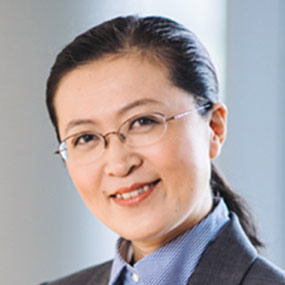Plenary Lecture
Aggregation-Induced Emission: Materials and Biomedical Applications
Bin Liu,*
Department of Chemical & Biomolecular Engineering, National University of Singapore, Singapore 117585, Singapore; Joint School of National University of Singapore and Tianjin University, International Campus of Tianjin University, Binhai New City, Fuzhou 350207, China
*Corresponding author: cheliub@nus.edu.sg
Abstract :
The recent years have witnessed the fast grow of fluorogens with aggregation-induced emission characteristics (AIEgens) in biomedical research. The weak emission of AIEgens as molecular species and their bright luminescence as nanoscopic aggregates distinguish them from conventional organic luminophores and inorganic nanoparticles, making them wonderful candidates for many high-tech applications. In this talk, we summarize our recent AIE work in the development of new fluorescent bioprobes for biosensing and imaging. The simple design and fluorescence turn-on feature of the molecular AIE bioprobes offer direct visualization of specific analytes and biological processes in aqueous media with higher sensitivity and better accuracy than traditional fluorescence turn-off probes. The AIE dot probes with different formulations and surface functionalities show advanced features over quantum dots and small molecule dyes in noninvasive cancer cell detection, long term cell tracing, and vascular imaging. In addition, our recent discovery that AIEgens with high brightness and efficient reactive oxygen species generation in aggregate state further expanded their applications to image-guided cancer surgery and therapy.
References
- D. Mao, B. Liu, Matter 4 (2), 350-376 (2021).
- X. Cai, B. Liu, Angew. Chem. 59 (225), 9868-9886 (2020).
- Kenry, B. Liu, Chem 6 (6), 1195-1198 (2020).



